BC Grade 7 Math Full Year Bundle
BC Grade 7 Math Full Year Bundle
Interested in a bundle? Shop below instead!
Couldn't load pickup availability
Distance Learning made easy! GOOGLE CLASSROOM VERSION - PDF INCLUDED! This gives you the ability to print worksheets as well as distribute a digital copy of the resource to your students on Google Classroom.
CHECK OUT WHAT IS INCLUDED IN THE PREVIEW:
Grade 7 – British Columbia Math Curriculum – This resource covers all elaborations in the Grade 7 – British Columbia (BC) Redesigned Math Curriculum. There are 1020 activity sheets for your students to learn and practice the elaborations in the curriculum. Using this resource will ensure that your students will be learning the new redesigned BC curriculum.
Numbers-
Concepts that are covered:
- Multiplication and division facts to 100 – challenging mental math questions using multiple strategies (skip counting, doubling and halving, breaking up numbers, splitting the dividend)
- Adding and subtracting integers using zero pairs and number lines
- Using addition and subtracting integer rules to solve equations
- Multiplying and dividing integers using integer rules and number lines
- Order of operations involving integers and decimal numbers (BEDMAS)
- Addition and subtraction of decimal numbers (to the thousandths place value)
- Multiplication and division of decimal numbers using 1-digit divisors and 2-digit multipliers
- Finding the missing percents in word problems (0% - 100%)
- Determining the value of percents from 1% - 100%
- Converting fractions, decimals and percents
- Equivalent fractions and simplifying fractions
- Generating fractions and decimals between other fractions and decimals
- Divisibility rules (2, 3, 4, 5, 6, 8, 9, and 10) as well as why a number cannot be divided by 0
- Identifying terminating and repeating decimals
- Patterns found in repeating decimals
- Converting improper fractions to mixed numbers and vise versa
- Comparing and ordering fractions, decimals, and whole numbers
- Determining fractions on a number line
- Relationship between decimals, fractions, ratios, and percents
- 3 Unit Tests
Patterns and Equations-
Some of the concepts that are covered:
- Increasing/Decreasing patterns using all 4 operations (addition, subtraction, multiplication and division)
- Determining pattern rules to extend patterns
- Finding linear relations in our everyday lives
- Representing patterns in table of values
- Recursive and functional patterns
- Constant rates and initial values
- Translating linear relations into tables of values and graphs
- Finding term number “n” in a pattern using the linear relation
- Analyzing tables of values and graphs to draw conclusions and solve problems
- Representing patterns using algebraic expressions to help solve for any term in a pattern
- Linear patterns – analyzing patterns in graphs
- Positive and negative integers in patterns
- Using pictures and symbols to model preservation of equality
- Solving equations to find the missing values
- Representing real-world situations as equations
- Explaining the different between expressions and equations
- Evaluating expressions when given the value of a variable
- Use one-step linear equations of the form x + a = b to represent real-world situations
- Use linear equations of the form ax = b, ax + b = c, and x/a = b to represent real-world situations
Geometry and Measurement-
Some of the concepts that are covered:
- Radius, diameter, and circumference of circles
- Relating circumference to pi
- Constructing circles with a given radius or diameter
- Solving word problems involving radii, diameters, and circumferences of circles
- Area of circles
- Area of semi-circles
- Volume of rectangular prisms and circles
- Investigating the relationship between the area of the base and the height of cylinders and prisms.
- Calculating volume of cylinders using nets
- Labeling each of the four quadrants on a cartesian plane
- Identify and plot points in the four quadrants of a cartesian plane
- Translations, reflections, and rotations of up to 360 degrees on a cartesian plane
- Performing a combination of transformations on a cartesian plane
- Graphing linear equations on a cartesian plane
- 3 Unit Tests
Graphing and Probability-
Some of the concepts that are covered:
- Difference between primary and secondary data
- Why we use percentages to represent a variable for a population
- Relative frequency tables (using percentages to represent data)
- Translating percentages from circle graphs to quantities
- Interpreting bar graphs, broken-line graphs, multiple-bar graphs, and circles graphs
- Creating bar graphs, broken-line graphs, and circle graphs
- Creating an appropriate scale for a variety of graphs as well as labels
- Creating and interpreting infographics using circle graphs
- Drawing conclusions about different sets of data
- Thinking critically about misleading graphs, including circle graphs
- Using fractions, decimals, and percents to represent the probability of multiple events
- Understanding the difference between theoretical and experimental probability
- Identifying the sample space (number of total outcomes) for experiments involving two independent events
- Comparing theoretical and experimental probabilities of independent events
- Using tree diagrams to represent independent events
Financial Literacy-
Some of the concepts that are covered:
- Mental math concepts – multiplying by 0.1 and 0.01 (10% and 1%)
- Calculating percentages – 10% and 15% using mental math strategies (half of 10%)
- Mental math strategies – using 0.1 to determine 1% and use that to determine 3%
- Calculating sale prices (25% off, 30% off)
- Calculating sales tax (12%) for things in BC
- Calculating the sales tax in real world situations (word problems)
- Estimating sales tax
- Calculating a tip in a restaurant
- Interest rates – borrowing and investing
- Simple interest vs compound interest
- Cost of borrowing over time
- Earnings actualized by investing long-term (compound interest)
- Using compound interest calculators online to see the power of compound interest
- Earnings actualized by investing long-term (compound interest)
- Comparing fixed-rate loans and variable-rate loans
- Determining when fixed-rate or variable-rate loans are better for different scenarios
- Income tax (gross/net income)
***Answer Pages for all worksheets are included
Share

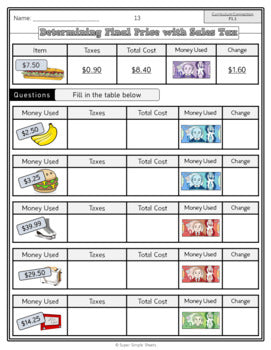
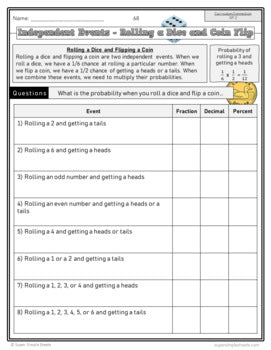
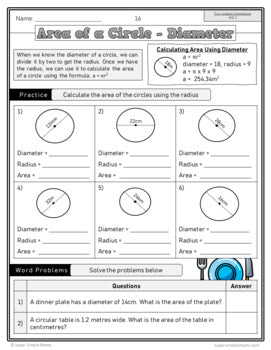
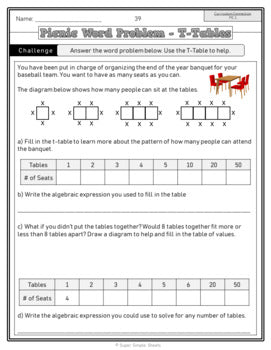
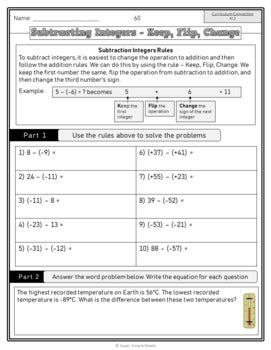
Great flow and progression, but theres usually at least one error on each answer key









